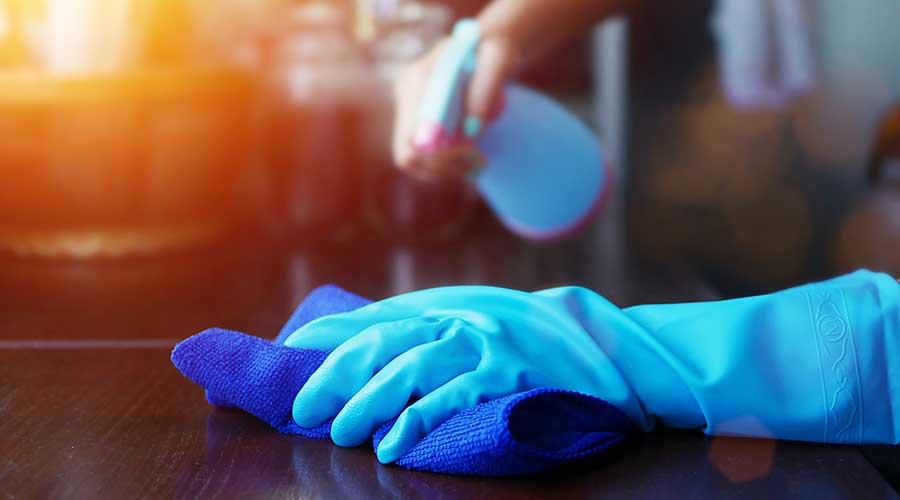Disinfecting is critical to preventing any pathogens from spreading in healthcare facilities. However, proper training is a must if the disinfection is going to be done effectively. In this manufacturer roundtable, Healthcare Facilities Today speaks with disinfectant manufacturers about training frontline staff on chemicals and their dwell times.
What suggestions do you have for training frontline staff who use chemicals that cite different dwell times to achieve kill claims of varying germs/bacteria?
“Environmental Protection Agency (EPA)-required efficacy testing does not consider the real-world use of disinfectants on surfaces in occupied buildings. As with any cleaning and disinfecting activity, the proper tools and process matter. Microfiber cloths are the best tool for removing debris and pathogens from surfaces. Properly folding the cloth helps ensure that pathogens are removed from one area and not wiped on another. When the proper processes are performed, pathogens and the disinfectant are removed from the surface with microfiber cloth. The disinfectant is still working on those removed pathogens in the cloth.”
— Caryn Gilliam, chief strategy officer, PortionPac Chemical Corporation
“Always follow facility policies and directives from the infection preventionist. Some facilities recommend using the longest contact time on the label for all situations. However, this is not always practical. For example, a best practice is to train staff to the contact time that kills most pathogens (three minutes) and to reserve the five-minute contact time for C. diff patients, which typically make up a small fraction of patients and can be identified by the special precautions signage at the room entrance.
Posters in environmental services (EVS) closets and break rooms can serve as a reminder to keep those contact times top of mind. Finally, standardizing and limiting the number of disinfecting products carried by the facility to no more than two to three helps in reducing the amount of information (such as contact time) that staff must retain to effectively and properly execute cleaning and disinfecting protocols.”
— Doe Kley, infection prevention fellow, Clorox Healthcare’s Clinical and Scientific Affairs Team
“This is a topic that needs to be stressed and understood in EVS training. Microbes vary vastly in composition and traits, so it naturally follows that no solution is ‘one-size-fits-all’. Identifying proper dwell time for what you are attempting to disinfect is extremely important. Finding a chemical that balances safety and efficacy with low dwell time posed challenges, but modern options, like SteraMist, offer remarkably effective solutions without leaving residues. This not only safeguards the well-being of staff and protects equipment from damage but also contributes to fostering a healthier environment as its only by-product is oxygen and humidity.”
— Spokesperson from TOMI Environmental Solutions Inc.
Jeff Wardon, Jr. is the assistant editor for the facilities market.

 Rethinking Strategies for Construction Success
Rethinking Strategies for Construction Success From Touchless to Total Performance: Healthcare Restroom Design Redefined
From Touchless to Total Performance: Healthcare Restroom Design Redefined New York State Approves $53M Construction Program at Niagara Falls Memorial Medical Center
New York State Approves $53M Construction Program at Niagara Falls Memorial Medical Center How Health Systems Are Rethinking Facilities Amid Margin Pressure
How Health Systems Are Rethinking Facilities Amid Margin Pressure Ground Broken on New Medical Office Building in Scottsdale, AZ
Ground Broken on New Medical Office Building in Scottsdale, AZ